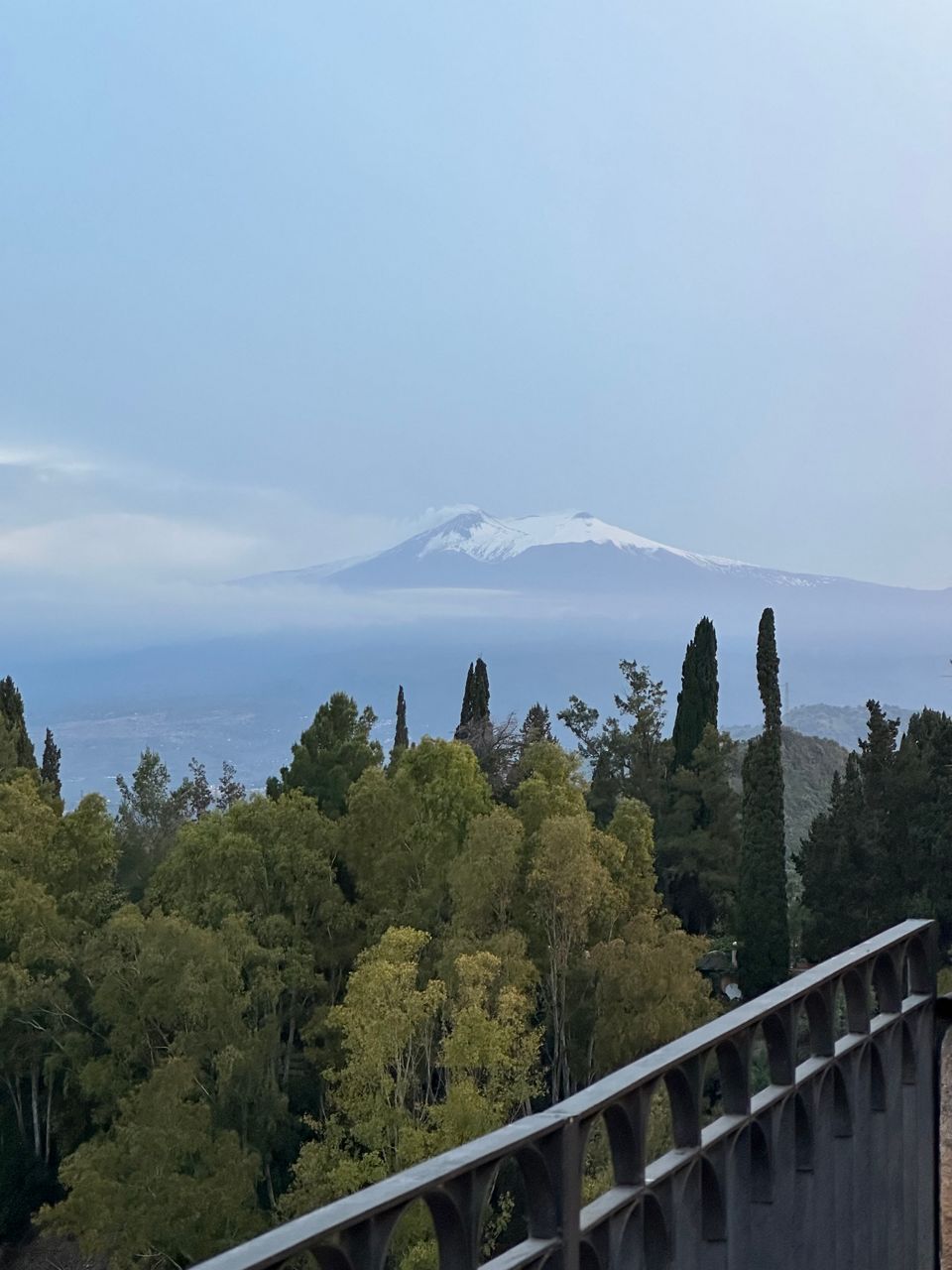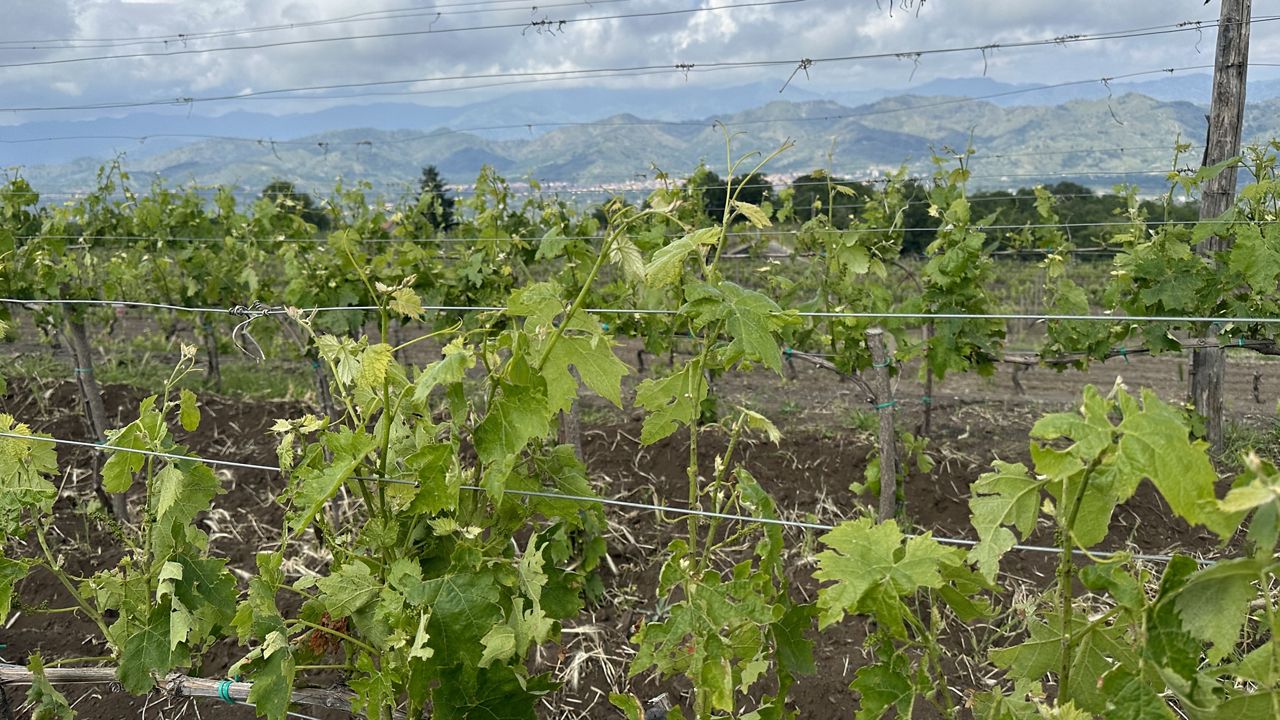An award-winning wine can attribute a large part of its success to optimal weather conditions during the growing season.
Yet, it takes a skilled vintner or winegrower to reap most of the harvest, even when conditions are less than ideal.
Many of the world’s best-tasting wines can trace their success to prime growing conditions leading up to the harvest, which can vary depending on the grape and location.
Ideal weather conditions throughout the growing season separate the elite from the ordinary. Although big shifts in weather and climate patterns can cause drastic deviations from an area’s seasonal norms. This can trigger a domino effect of impacts from vine to bottle.
During a recent trip to Italy, I learned how one vineyard is making strides to make the most out of every growing season- without supplementing their wines to enhance flavor.
"What's interesting is that with grapes [during the growing season], the sun, rain, winds, all of that, are recorded and expressed in the bottle. That is, of course, if you don't make too many 'adjustments' in the cellar," says Nino Mangano, my wine tasting guide (and translator) at Gambino Vini, a winery in Sicily.
According to the International Organisation of Vine and Wine (OIV), winemakers grow around 10,000 grape varieties globally, each adapting to specific climates in the regions they are grown.
Even the same grape species can spawn differences year after year, depending on the location it was grown and the weather conditions it endured leading up to harvest.
Many red grape varieties take a longer time to ripen and require an extended growing period. Because of this, these grapes fare better in warmer climates. White grapes, on the other hand, thrive in cooler environments.
A challenging growing season leaves a bad taste both literately and figuratively, and the demand to cultivate enjoyable wines year-after-year never ceases.
While lack of product alone will result in fewer bottles produced, shifts in normal weather patterns can also modify the content of the grapes themselves. This can alter the quality of the wine produced.
In general, warmer and drier seasons yield grapes with higher sugar content, increasing the wine’s alcohol content and acidity. Too wet, and the risk for fungal disease is greater.
To combat this, many vintners will substitute additives to enhance flavor and make the wine suitable to sell without taking a total loss. Yet, other winemakers are taking a more natural approach.
Italy is home to some of the world’s best-known wines. While many vintners produce wine in Tuscany, vineyards stretch down the country’s entire peninsula, and even extend to the biggest island in the Mediterranean, Sicily.

Compared to the rest of the country, Sicily's climate is warmer. However, its mountainous topography makes it well-suited for growing grapes.
This is especially true on the slopes of Mount Etna, where Gambino Vini devotes the success of its wines to the mountain’s nutrient-rich, volcanic soil and higher elevation.
Even the same type of grape grown at different altitudes can produce several diverse wines.

"Nerello Mascalese, Etna’s most important red grape, is indeed very versatile," expresses Salvatore Rizzuto, a winemaker at Gambino Vini.
A unique red grape, Nerello Mascalese, is a Sicilian staple, and is bottled predominately as a hearty, rich red wine. Warmer summers bring out the best of the bunch, making for the best-tasting reds in the region following that season.
Cooler and wetter seasons do not reap the same rewards, at least when it comes to making these beloved reds. Rather, the winemakers at Gambino Vini found that the same Nerello Mascalese grape was more suitable for making rosé during such seasons.
"2012 was a particularly warm summer, so we decided to make more bottles of Petto Dragone (a selection from the oldest vines of Nerello Mascalese varietal) and fewer bottles of Tifeo Rosato (our rosé from the same varietal) because parameters simply were not ideal for a crisp and fresh rosé, whereas 2013 and 2018 were particularly cold and wet, so we skipped Petto Dragone entirely and produced many more bottles of rosé," explains Rizzuto.
By monitoring the weather and ripening of their grapes, the winemaker and agronomist at the vineyard no longer adhere to following the commercial demand. Instead, they are learning to adapt to whatever weather conditions that season has to offer to focus on what wines they will bottle.
Gambino Vini also expanded their signature collection. During the cold and damp year of 2013, they successfully made their very first Spumante Metodo Classico Brut, a crisp and dry sparkling wine made with the same Nerello Mascalese grape.
Over the last three years, the vineyard continues to work on cultivating Spumante Metodo Classico Rosé, which they look forward to releasing soon.
Leaving off with this sentiment, Rizzuto states, "If you are to be true to the season rather than the market, you’ve got to listen to what the grapes have to say."
Our team of meteorologists dives deep into the science of weather and breaks down timely weather data and information. To view more weather and climate stories, check out our weather blogs section.
Shawnie Caslin - Digital Meteorologist
Shawnie joined Spectrum News as a Digital Meteorologist in 2021. After discovering her love for weather as a child, she earned a Bachelor's of Science in Meteorology from Rutgers University in 2015. Prior to joining Spectrum, Shawnie worked behind the scenes at local and national networks as a meteorologist and weather graphics producer in New York City. She thoroughly enjoys working in the media and is always passionate to explore the different ways weather impacts our everyday lives.








